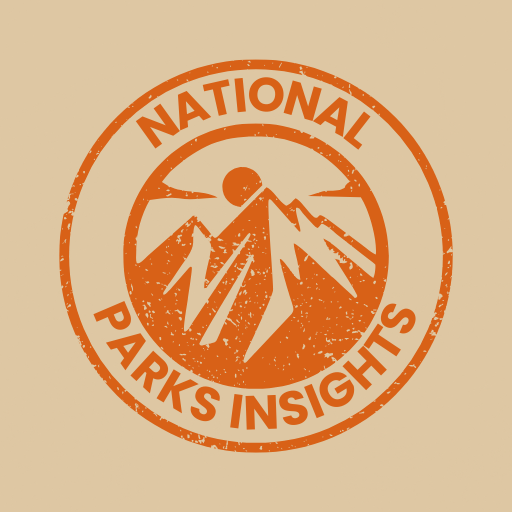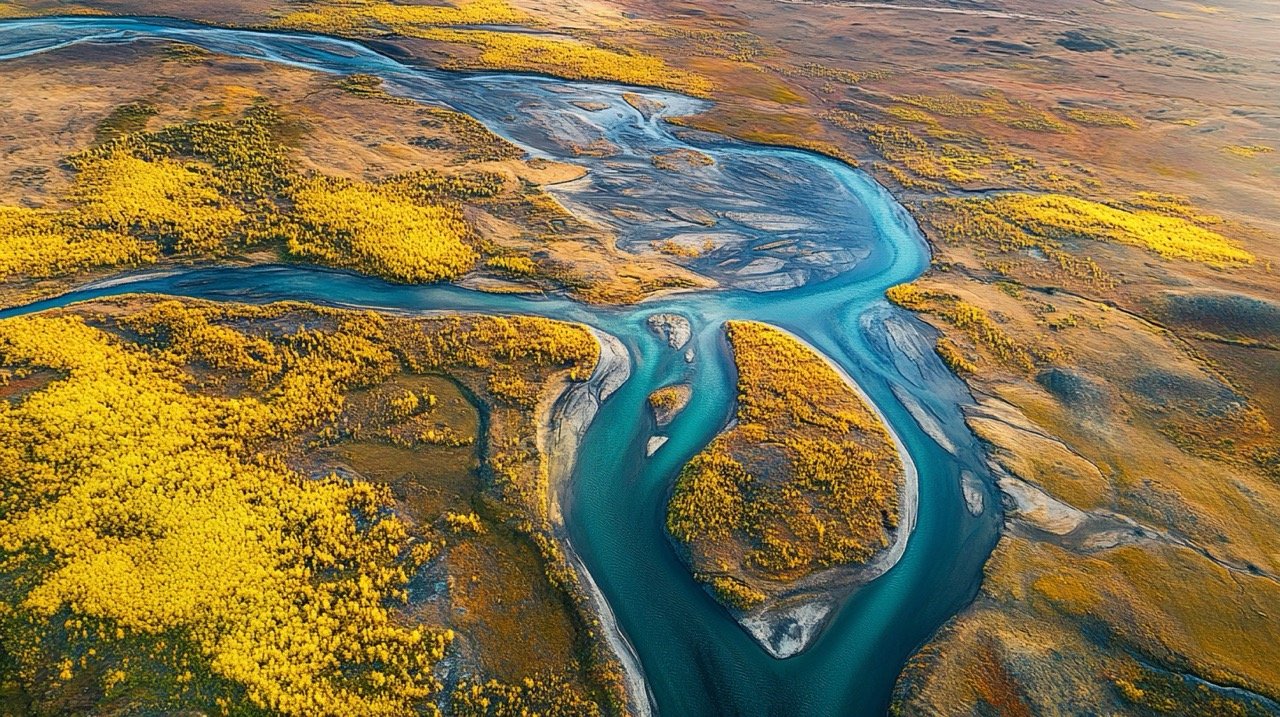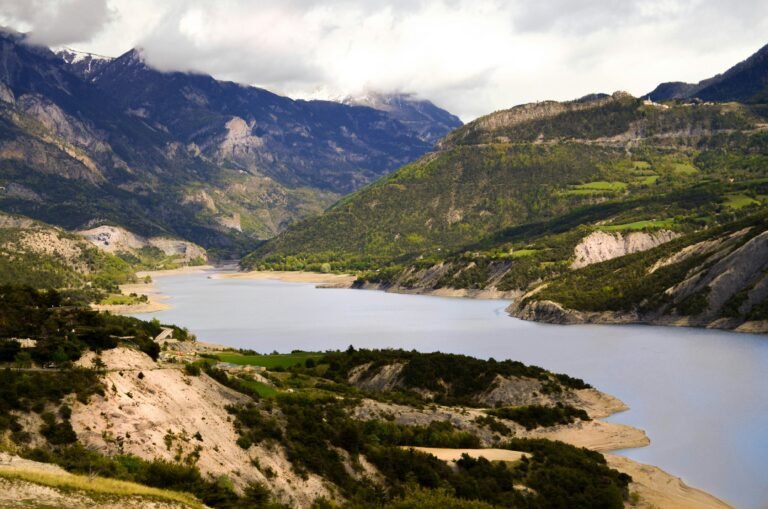Exploring Wildlife in Kobuk Valley
So, you’re thinking about heading to Kobuk Valley National Park, huh? Well, get ready for some wild adventures because this Alaskan gem is bursting with critters of every kind. Big ones, small ones, and even those you never thought you’d see outside a nature documentary.
Diverse Animal Population
When you land your boots in Kobuk Valley National Park, you’re stepping into a massive living zoo without fences. You’ve got your furry pals like caribou and muskoxen, fish splashing around like arctic grayling and Dolly Varden, and if you’re lucky, you might catch a glimpse of that lone warrior amphibian, the wood frog, battling it out in the Arctic. Here’s the roll call for the park’s A-list residents:
| Animal Type | Example Species |
|---|---|
| Mammals | Caribou, Dall Sheep, Muskoxen |
| Fish | Arctic Grayling, Dolly Varden |
| Birds | Snowy Owl, Golden Eagle, Sandhill Crane |
| Amphibians | Wood Frog |
But let’s not forget the real showstopper – the Western Arctic caribou herd. They’re like the rock stars of the park, drawing fans and photographers from all over. And for you bird nerds, Kobuk Valley’s got your binoculars buzzing with breeding birds winging in from continents afar.
Impact of Climate Change
Now, hold on to your hats because here’s the not-so-sunny stuff. Climate change is shaking things up in ways you can’t even imagine. Our caribou buddies? They’re feeling the heat, literally. Changes in snow, plants and their lunch options due to global warming are messing with their routine (National Park Service).
What’s getting flipped upside down thanks to climate change?
- The snow blanket
- Predators lurking
- Home sweet home shifts
- Rival species gatecrashing
And don’t even get me started on humans. We’re bringing in noise, pollution, and other hassles that make life a bit tougher for these creatures (National Park Service).
Curious to track those hoofed migrations? Head over to our deep dive on Kobuk Valley Caribou Migration.
Kobuk Valley’s not just any park—it’s a survival base for all kinds of critters, including some rare and endangered feathered friends. You’ll see, feel, and maybe even smell the effects of climate change up close, reminding us why we need to put some oomph into conservation. If you decide to embark on this wilderness rendezvous, drop by the Kobuk Valley Visitor Information to get your ducks in a row with the latest updates and travel guides.
Caribou in Kobuk Valley
Howdy from Kobuk Valley National Park! This place is teeming with critters, and one of the most memorable sights you’ll catch is a herd of caribou. These antlered wanderers have quite the story to tell, one that you’ll appreciate more with a bit of background on their numbers and how folks like us affect them.
Population Dynamics
Caribou numbers in Kobuk Valley are a bit like a rollercoaster. They go up and down every so often, and lots of stuff factors into these swings, like the weather, where they hang out, and run-ins with hungry predators or pesky bugs and illnesses (National Park Service).
The changes in climate throw a real wrench into the caribou’s world, messing with the grub they graze on. Snow behaves differently, too, which makes them easier predators’ snack (National Park Service).
Here’s a quick and friendly breakdown of what’s stirring the pot for caribou numbers:
| Influencer | How It Shakes Things Up |
|---|---|
| Climate | Changes what they eat, snow gets funky |
| Predators | More risk, less caribou |
| Illnesses and Critters | Makes ’em weak, numbers drop |
| Environment | Home sweet home becomes not so sweet |
Get a load of the wild challenges critters face in Kobuk Valley.
Human Influence
We humans have our fingerprints everywhere, even on the bustling caribou highways. Down south, where we’re a bit more of a presence, our actions weigh on caribou groups, sometimes putting them on a slippery slope toward trouble.
Here’s a look at what we do to tip the caribou scales:
- Industrial Messes: Muddy up their snack zones.
- Messing with Their Turf: Carves out or screws up their hangouts.
- New Critters in Town: Steal their munchies and hangouts.
- Our Racket: Throws them off their groove and travel plans.
| Human Shenanigans | What Happens |
|---|---|
| Industrial Mess | Less tasty vegetation |
| Habitat Wrecking | Shrinks their neighborhood |
| Newcomer Critters | Less bounty to go around |
| Noise Pollution | Bugs their behavior and travel plans |
For heart-warming tales of how we’re trying to be better roommates with caribou, check out the bit on saving the critters.
When you drop by Kobuk Valley, watching these antlered beauties teaches you a thing or two about tiptoeing around nature’s tightrope up in the Arctic. For more tidbits about how these guys get from A to B or other cool facts, pop over to caribou migration tales and plenty more at Kobuk Valley NP.
Unique Wildlife in Kobuk Valley
Kobuk Valley is a haven teeming with critters that will blow your mind and leave you as excited as a kid in a candy store. Let’s dive into the world of two of its coolest residents: Dall sheep and muskoxen.
Dall Sheep
You’re planning a trip to Kobuk Valley, right? Well, pack those binoculars and go on a sheep-sightin’ adventure. Kobuk Valley National Park in Alaska is a prime spot for checkin’ out these sheep, sporting those iconic, twisty white horns and woolly white coats. They’re like the agile mountaineers of the animal kingdom, hangin’ out in Southcentral, Interior, and Arctic mountains.
| Characteristic | Dall Sheep |
|---|---|
| Habitat | Mountain ranges in Southcentral, Interior, and Arctic Alaska |
| Horns | Curved, white |
| Coat | Snow-white |
Whether they’re scale-climbing steeps or chowing on wild greens, watching these sheep do their mountain maneuvers in their natural playground is the kinda experience that’ll stick with ya.
Muskoxen
And then there’s the muskoxen, which kinda look like they wandered out of a history book with their grand, sweeping coats dragging on the floor. You’ll spot them in places like the Arctic and western Alaska. They’re the neighborhood tough guys, decked out with thick fur to fend off that wicked cold.
| Characteristic | Muskoxen |
|---|---|
| Habitat | Northeast and northwest Arctic, western Yukon-Kuskokwim Delta, Seward Peninsula, Nunivak Island |
| Coat | Long, ground-skimming coat |
| Appearance | Prehistoric-looking |
These guys are built for the icy wilds and catching a glimpse of them chillin’ out can feel like stepping back to the Ice Age.
Kobuk Valley is more than just sheep and muskoxen – it’s a veritable zoo without the bars. Think grizzlies, wolves, wolverines, and the whole Western Arctic Caribou Herd kicking around too (jcarpsc5). From the Dall sheep doing their cliff balancing act to muskoxen struttin’ through the tundra, you’re in for a wild ride. For the low down and the best plans to catch all of this awesomeness, hop over to the kobuk valley visitor information.
Arctic Marine Life
Kobuk Valley National Park isn’t just about land critters and jagged rocks. The sea creatures in and around this Arctic spot bring a splash of variety to the place. Top of the must-see list? Walruses and gray whales, for sure.
Walruses
Think seals are big? Meet the walrus, their gigantic cousin. Though you won’t catch them hanging out in Kobuk Valley directly, these tusked wonders are nearby around Alaska’s coast. Check out spots like Walrus Islands State Game Sanctuary, Pribilof Islands, and St. Lawrence Island. There, you might see them chilling on ice or sandy beaches, showing off their spectacular whiskers.
| Location | Walrus Hangout Spot | Best Time to Spot |
|---|---|---|
| Walrus Islands State Game Sanctuary | Lots of ’em | Summer |
| Pribilof Islands | A fair amount | Summer |
| St. Lawrence Island | Loads! | Summer |
If you want more lowdown on Kobuk Valley’s critters, mammals and sea buddies included, have at it.
Gray Whales
These whales are real travelers, among the early birds to hit Alaska every spring. They trek from Baja California to the north for a feast in places like Kenai Fjords National Park. It’s a heck of a journey, one of the longest for any mammal. These whales are worth the time to spot.
| Migration Pathway | Distance They Journey | When They Pass Through |
|---|---|---|
| Baja California to Alaska | 5,000-6,800 miles | Spring to Early Summer |
As you wander the wilderness areas of Kobuk Valley, remember there’s plenty happening just offshore. If you’re planning to swing by, see how to visit Kobuk Valley for all the stuff you need to know.
Can’t get enough? Dive into our piece on the Kobuk Valley caribou migration for another side of Kobuk Valley’s amazing life show.
Protection of Endangered Species
Polar Bears
You’re unlikely to forget the sight of a polar bear if you’re lucky enough to spot one in the wild. These incredible creatures hang out in some of the chilliest corners of the Arctic, including spots in Alaska like the Arctic National Wildlife Refuge, and the super northern and western parts of Alaska. You won’t bump into them often in Kobuk Valley National Park, but their presence adds a sprinkle of magic to the place, reminding us how important it is to protect environments bursting with life and variety. They’re like the furry ambassadors of Kobuk Valley who represent both splendor and the delicate balance of nature up north.
Conservation Efforts
Kobuk Valley National Park isn’t just a pretty face; it’s a guardian busy keeping a watchful eye on a range of critters whether they fly or scamper around. Among its VIPs are the swarming Western Arctic caribou and a few bird species that got slapped with the “endangered” tag. Saving these animals largely means saving their homes, which is what the park really gets into with gusto, ensuring that their yearly wanderings continue uninterrupted—Global National Parks has a bit more to say on that.
| Conservation Area | Wildlife VIPs | Key Moves |
|---|---|---|
| Arctic National Wildlife Refuge | Polar Bears, Caribou | Keeping habitats safe, Stopping illegal hunting |
| Kobuk Valley National Park | Feathered friends, Caribou | Protecting paths they roam, Research projects |
| Gates of the Arctic National Park | Wolves, Moose | Keeping tabs on movements, Wildlife pathways |
Taking a jaunt to Kobuk Valley National Park? Trust us, tuning into their conservation gigs will not just fill your brain with facts but also open your eyes to the underlying importance of maintaining the grand show of nature. Curious for more? Pop over to kobuk valley visitor information on how to be part of the story.
Natural Wonders of Kobuk Valley
Wandering through the breathtaking beauty of Kobuk Valley National Park, you’ll stumble upon some of nature’s true masterpieces. Two must-see highlights are the Great Kobuk Sand Dunes and the lush boreal forests that call this place home.
Kobuk Sand Dunes
Picture this: You’re in the Arctic, yet you’re standing amidst towering sand dunes. That’s just what you’ll find at the Great Kobuk Sand Dunes. Often dubbed the “Arctic Sahara,” these massive dunes cover 25,000 acres and can soar as high as 100 feet (Global National Parks). They were formed a whopping 150,000 years ago by glacial outwash streams and stretch across about 25 square miles southeast of the Kobuk River (Britannica).
Some tidbits about the Great Kobuk Sand Dunes:
| Feature | Details |
|---|---|
| Area Covered | 25,000 acres |
| Height | Up to 100 feet |
| Age | About 150,000 years |
| Location | Southeast of Kobuk River |
Curious to explore more? Take a peek at our detailed guide on great kobuk sand dunes.
Boreal Forests
Venturing through Kobuk Valley, you’ll also get to explore the sprawling boreal forests, another gem of the park. Spruce, alder, and birch trees make up most of these forests. Moving north across the valley, you’ll notice the shift as forests give way to Arctic tundra, creating a unique blend of landscapes.
These forests house a variety of wildlife, enhancing the park’s biodiversity. Walking among these trees offers you a whole new way to experience Kobuk Valley’s wild side—an intriguing contrast to the vast sand dunes.
Planning a trip? Don’t forget to check the kobuk valley weather and kobuk valley visitor information to keep your journey smooth and delightful.
If you’re up for more adventure, maybe explore the nearby gates of the arctic national park and check out the amazing kobuk valley caribou migration. Kobuk Valley’s natural wonders are calling for you to discover them.
Historical and Archaeological Significance
Kobuk Valley’s got more than just awesome wildlife and jaw-dropping views; it’s packed with historical and archaeological gems that whisper tales of ancient folks who once called this place home.
Orange Portage Site
Let’s chat about the Orange Portage Site. It’s a big deal in Kobuk Valley National Park and sits comfy in the park’s southeast corner. Around 12,000 years ago, humans were hanging out here (Britannica). When archeologists poked around, they found stuff that really paints a picture of those early communities.
Imagine unearthing tools, pottery, and all sorts of goodies that show just how ingenious and adaptable those past peoples were. If you’ve got a thing for digging up history, do yourself a favor and check this site out; it’s a real treat.
| Artifact Type | Estimated Age (Years) |
|---|---|
| Stone Tools | 12,000 |
| Pottery Shards | 10,000 |
| Hunting Gear | 8,000 |
For even more juicy details, see our piece on visiting Kobuk Valley.
Human Occupation
Humans were chilling in Kobuk Valley as far back as 12,000 years ago, not just at the Orange Portage Site; there’s more action elsewhere in the park (Britannica). The valley, with its smorgasbord of resources, was quite the spot for settling down back then.
Back in the day, local tribes made the most of the jam-packed wildlife – think caribou and fish – and all sorts of plant goodies. And, oh, those caribou migrations were like Thanksgiving dinner rolling through the neighborhood, a huge deal for both survival and culture. If that tickles your fancy, check our write-up on kobuk valley caribou migration for the full scoop.
Over lots and lots of years, people added layers to the valley’s story, leaving echoes of their presence. This legacy makes the area a hot spot for researchers, history geeks, and curious souls. To dive into the ancient vibes mingling with today’s world, hit up kobuk valley national park and soak in its rich backdrop.
This mix of history and wild beauty turns any trip to Kobuk Valley into a quest, drawing not just those with a love for wildlife but history nerds and anyone eager to feel the connections that have lingered through the ages.
Access and Park Information
Wilderness Area
Kobuk Valley National Park is like Mother Nature showing off her wild side. Covering 2,736 square miles in northwestern Alaska, it’s a slice of untouched wilderness that makes you pinch yourself to make sure it’s real. Home to the epic annual caribou parade, some hardy Dall sheep, and the furry, prehistoric-looking muskoxen, this park is a must-see for wildlife buffs. It’s not just the critters that are worth the trip. The land here is sacred ground for the Iñupiaq, and it serves up soul-quenching experiences for anyone willing to make the trek (jcarpsc5).
When you come across the Great Kobuk Sand Dunes, you’ll think you’ve stumbled into a desert dream plopped in the middle of Alaska. Plus, the boreal forests give you a chance to lose yourself in wildlife’s living room. Nestled snugly between Noatak National Preserve and Selawik National Wildlife Refuge (Britannica), this park is as roadless as they come. It’s nature in all its unscripted glory for those seeking a raw outdoor escapade.
Transportation Options
Getting to Kobuk Valley National Park is a journey on its own. With no roads to lead you in, your ticket to paradise starts with a small plane ride from Kotzebue, a town about a hundred miles away. You’ll be up in the clouds with jaw-dropping views that’ll make you wish you had a panoramic set of peepers.
| How to Get There | What’s in Store |
|---|---|
| Airplane | Your chariot is a small plane from Kotzebue. Expect mind-blowing vistas as you glide over this vast wilderness. |
| Planning Ahead | Coordinate your flights early, especially during busy seasons. Local air services will have your back. |
Prepping for this trip is non-negotiable. Without roads or trails marking your path, Kobuk’s wilderness demands respect and readiness for backcountry adventures. Visitors typically work with savvy local air taxi pilots who know the land like the back of their hand. Jump over to the visiting kobuk valley page to get the scoop from the National Park Service on safety and planning.
Before packing your bags, it pays to be weather-wise. Our kobuk valley weather guide will give you the lowdown on what to expect from the skies. So whether you’re there to be wowed by the wild creatures or blown away by the beauty, Kobuk Valley promises memories that’ll stick with you forever.




